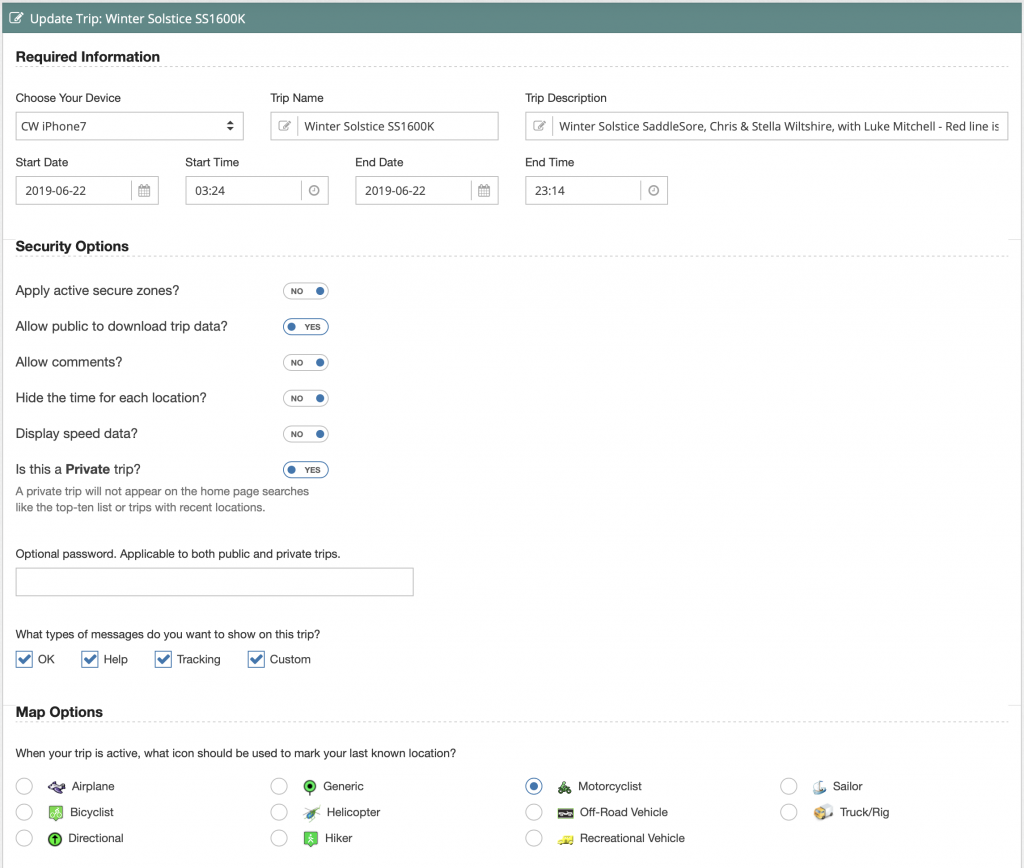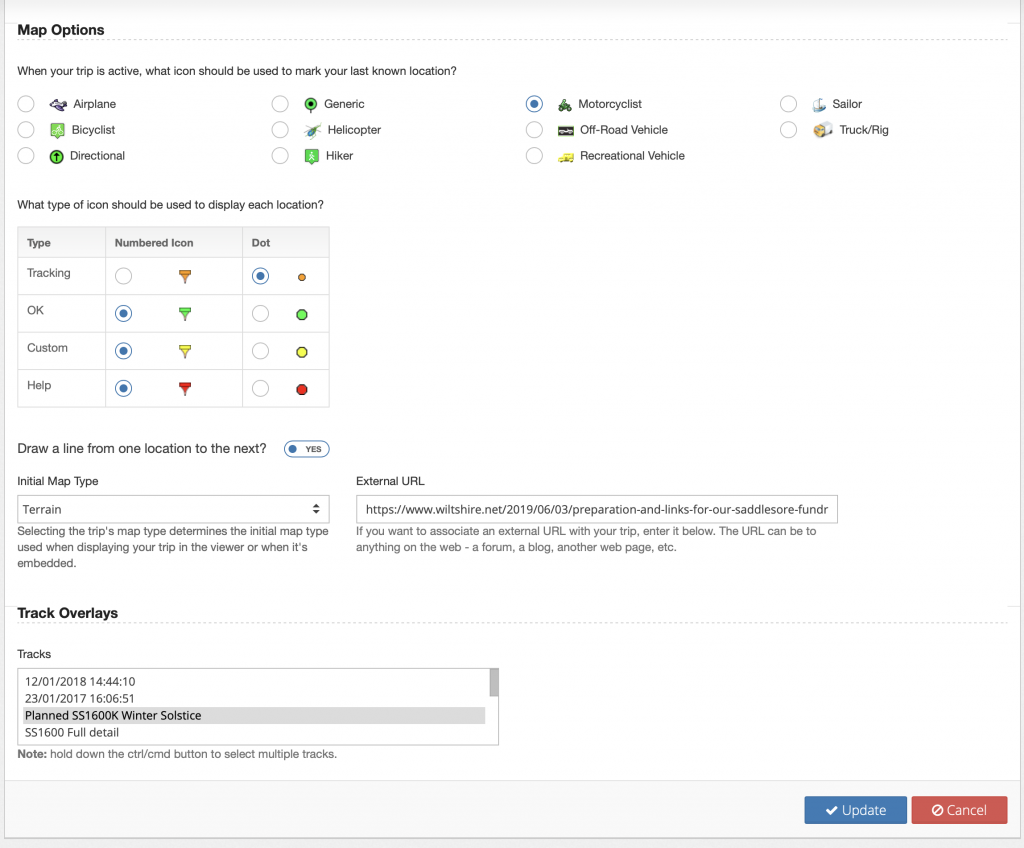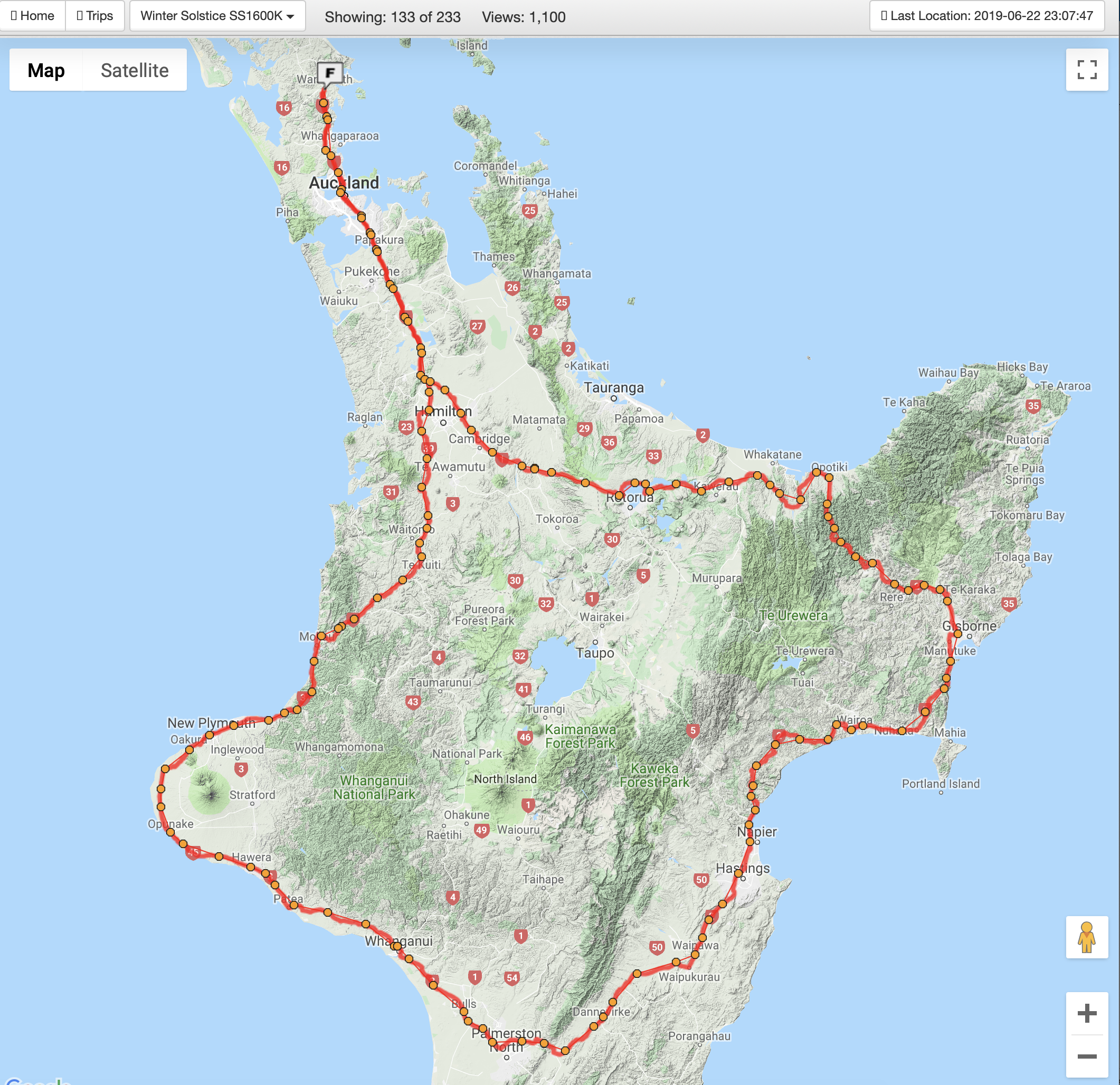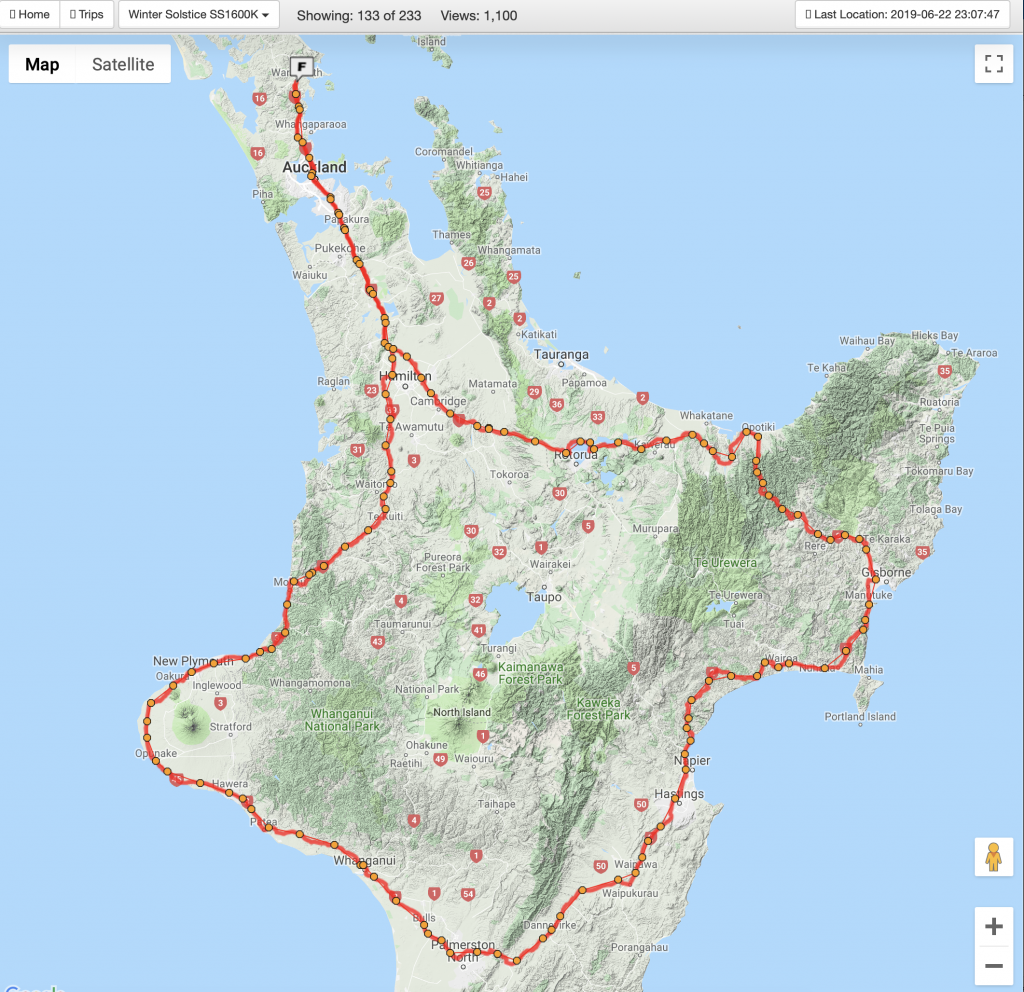I’ve chosen my wording and terminology in the title of this post quite carefully.
The word ‘Track’ can mean different things to different people and in the world of GPS users, a Track is often the trail of breadcrumbs which a GPS creates. That’s certainly the case within basecamp and also from a Garmin GPS.
In the world of SpotWalla, the only place I’ve seen the word ‘Track’ used is as an over-lay for a map. It is a pre-determined, shaped route that can be overlaid onto of one of the SpotWalla maps. It doesn’t often relate to the accumulated sets of points which are gathered from your own device and sent to SpotWalla. These are called ‘Messages’, as each location is sent via a message into SpotWalla. You can view your device’s ‘Message History’ within the Devices area.
Anyway, I’m digressing. If you’re here on this page, you’re most likely interested in learning how you might make use of SpotWalla and to start to create what most of us would think of as a ‘Ride’, or a ‘Route’. They call these ‘Trips’.
Before we start, there’s one more important way of thinking to try to get across to you. SpotWalla, in it’s most basic form, simply receives message points and stores them for you. The individual points are not inherently linked in any way, they are just a series of location points. If you want to ‘frame’ them, into a trip, and to say that ‘all of the points between this time and date, and this time and date all represent a journey which I took’ – then this is exactly what you’re doing when you define a ‘Trip’ in SpotWalla.
Let’s explore some thinking: Let’s say you were taking part in a multi-day rally, let’s say it’s the TT2000, which starts on Friday at noon, and finishes on Sunday at noon. Assuming that you start and stop your SpotWalla tracking device for each of your 3x major riding sessions, then it would be possible for you to build *all* of the following:
- A Trip showing what you did on Friday from noon, until you stopped at 11pm.
- A Trip showing what you did on Saturday from 6am, until you stopped at 9:30pm.
- A Trip showing what you did on Sunday from 8am, until you finished at 11:47am.
- A Trip showing the entire journey which you took from Friday noon, until you stopped at 11:47pm.
- A Trip showing the entire journey which includes leaving home to travel to the TT start location, all of the TT riding, and the ride you took to get home.
You can have as many trips as you like, and you can select from what-ever period of tracking you have captured from your device. Each trip can overlap, or not, with any other trip.
This is one of the things which makes SpotWalla tracking quite different from almost all other trackers which you might use; and because of these differences, it can often be a little different and potentially non-intuitive for people who might already be used to doing things a different way.
So, what do I have to do?
Track your ride
In other posts we’ve covered off how to get your SpotWalla account setup, and how to get your device logging your tracking messages into SpotWalla. I’m not aiming to cover this off again in this post. I’ll presume that you’ve got this all setup.
The important thing to do is to open the SpotWalla app (SWConnect on iOS, or BubblerGPS Pro on Android), and make sure you activate your tracker. Also, check that points are being contributed, and are not being buffered, or stored on your device without making their way into the centralised SpotWalla service.
If you do not track your ride, then you cannot expect to do anything with it. Feel free to track ‘more than you need’ – it does not need to start at exactly the right point, it can start earlier than you might think is otherwise useful. You can also leave it running longer than you might feel is needed too. I say this because you can always choose to ‘trim’ your ride, by setting your Trip up to precisely present just the useful time-period which accurately represents your ride. You can always take the extras out, but you cannot put missing bits back in.
Build (and share) your Trip
Quite often one of the features of SpotWalla which I enjoy using is the Trip-sharing feature. This allows you to provide a URL to people who are interested in seeing your ride. If you prepare your Trip ahead of time, and share the web-address (URL) for your Trip ahead of time, then as you are riding it, your viewers will be able to see your Trip take shape. In near to real-time, they will be able to view your route getting longer, one spotted point at a time.
Your SpotWalla tracking device will be set to log location messages every 5 minutes or so. This means that every 5 minutes your viewers will see your progress advance by one more logged location point.
I’ve often used these shared pages with people who have backed some of my fundraising rides. Its one small way to give them something back, and to help them to feel more included in the whole effort.
If you’re building your Trip ahead of time, then consider setting the time window period wider than you are likely to start logging, for example if the ride starts at noon, consider setting your Trip start time to include location points which have been captured from 11:30am. In this way, if you do start logging your location before the start of your actual ride, then you’ll begin sharing points which show you’re at the start, ready and waiting. Likewise at the end, leave the window open longer than you expect to need it.
In this way, when you’re focussing on actually getting on with the ride, you won’t also be having to worry about those people who you’ve invited to see your progress. – As long as you’re actively tracking, you’ll be able to trust that they’ll be seeing it.
I also routinely save the shared Trip page as an icon on my phone’s home page – so that with a single click, I can load a browser window which will take me to what they will be seeing. I will often check that it’s all working about 10 minutes before I’m due to set-off, and again within the first 15 km of the ride.
After you have completed your ride and after you get home, as you’re writing up your ride report, that’s the time to re-visit your Trip settings in SpotWalla, and to trim the start and end-times so that they don’t include your quick trip to the petrol station before hand, and your trip to McD’s after you finished.
Building a Trip in SpotWalla is easy, login to your account, then using the drop-down in the top right hand side on your Username, choose Trips. On that page you can ‘Add New’, and set one up. You have to give it a short name, a longer description, choose the device from which you want it to take its location points, and nominate the start-time and date, and the end-time and date.
Other options include whether you want to make it public, or unlisted, include a viewing password, allow downloading of your points, display your speed, what icons to use, what types of messages to include, and finally what type of map-background to use by default.
Once you’ve created your Trip, it will then be listed on the Trips page, if you click the down-arrow within the listed trip button (next to the name), you’ll see options which include Viewing the trip (which will open the viewing page) and seeing the Trip Links.
When you chose the Trip Links option, a popup window will show you the web-addresses to use if you want to share it with friends, families, or perhaps on facebook or with an event organiser (as a personal location link). – This assumes that they’ve not put together an event’s Location page (as they have in the NZDR NI event this year).
Here’s a good example of a Trip page, which shows our Winter Solstice Saddlesore ride which we did on 22nd June 2019. https://spotwalla.com/tripViewer.php?id=1e6745cfb60acb4a1a
On that example page, you’ll see that the SpotWalla points are joined using their own orange line, but I have also chosen to upload a Track (GPX) file taken from basecamp, which shows the exact planned route which we had loaded into the Garmin. The red line is that Track, it’s only what we planned, not what we rode, we rode the spotty points. If you zoom in on the map you will see the straight lines between the SpotWalla points, and how they differ from the twisty version of the planner route. – This is actually an illustration as to why Spot based tracks, with points taken every 5 minutes are not very good at accounting for the distances actually travelled. In order to use a Spot collection of location points to determine the distance travelled, it needs to be fed back into mapping / routing software and a road based route needs to be re-calculated from the series of points. – That is a post for another day….
For your reference, here is what my Trip page looks like for the Winter Solstice ride:

…


